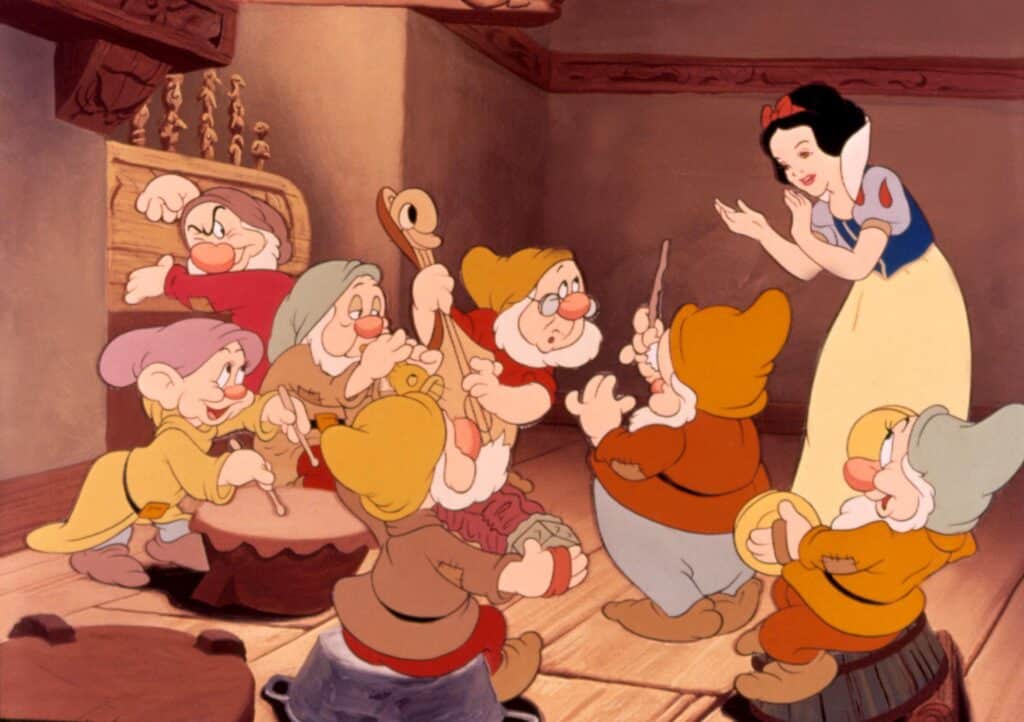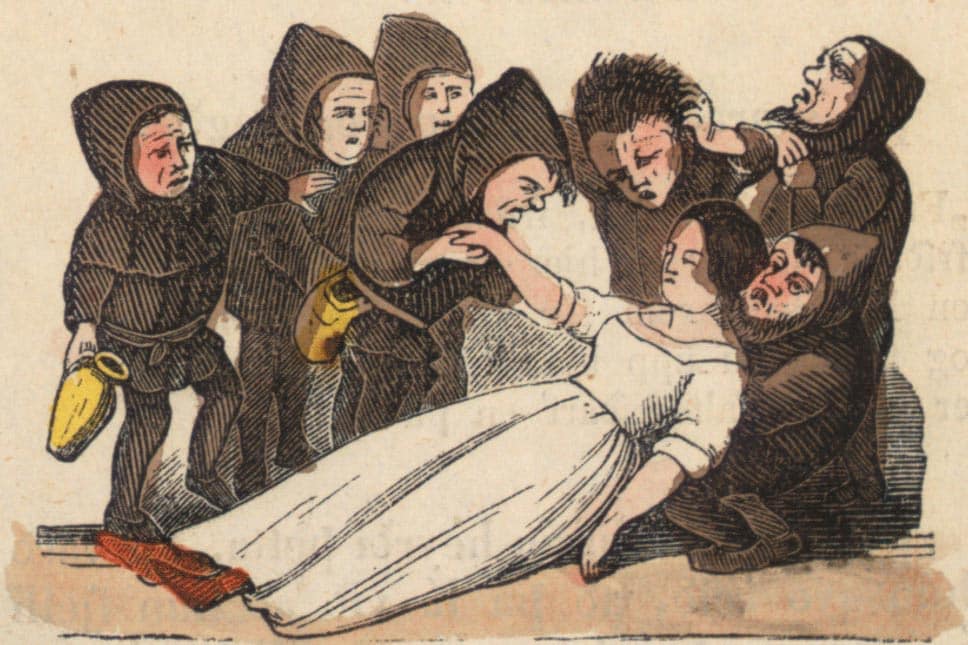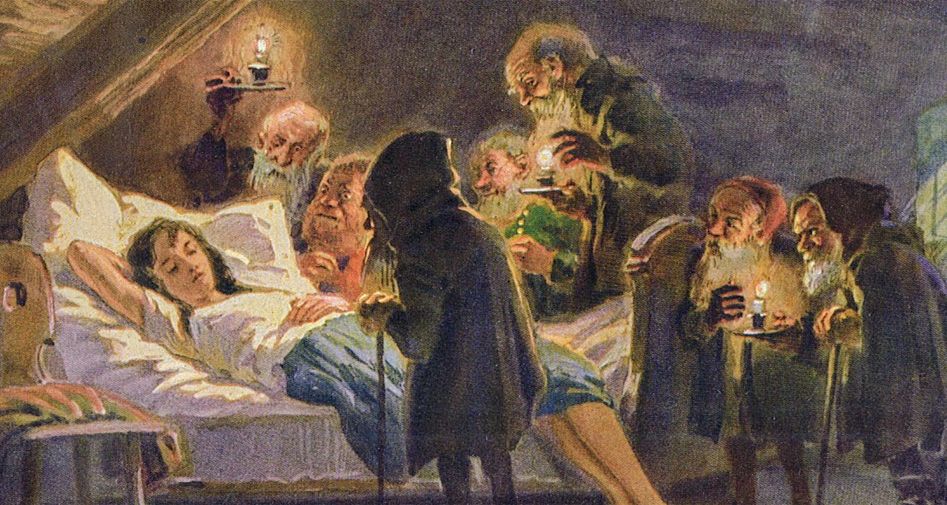When people think of animated Disney movies, they tend to think of either the more modern films, the classics at the end of the twentieth century, or the early classics made when Walt Disney himself was still alive. However, many earlier films, and a few more recent ones, had their foundations in European fairy tales.
An excellent example of this is Snow White and the Seven Dwarfs. Snow White was, in fact, the first Disney animated film and was effectively the first animated film in movie history.
The film nearly ruined Disney, but it started a legacy and remains, adjusted for inflation, one of the highest-grossing films on record.

Making Snow White and the Seven Dwarfs
Many at the time had concerns about the film. As noted here, “Walt Disney’s decision to make Snow White, which was the first animated feature to be produced in English and in Technicolor, flew in the face of the popular wisdom at the time.
Naysayers, including his wife Lillian, warned him that audiences, especially adults, wouldn’t sit through a feature-length cartoon fantasy about dwarfs.”
As already noted, the film performed very well. Perhaps people needed a whimsical fairy tale with a happy ending in the last years of the Great Depression, with both Japan and the Third Reich looming on either side of the country.
Though an exceptional achievement in the worlds of filmmaking and animation, those familiar with the work cannot help but note some glaring issues with the story. Or rather, the issues related to how the story adapted the source material.
Glaring Differences From The Snow White Fairy Tale
The original story of Snow White, like many fairy tales, is a delightful mix of whimsy, folklore, and entrepreneurship. The story was just one of many popularized by the Brothers Grimm, Jacob and Wilhelm (William in English).
These two brothers met a man named Clemens Brentano in 1806. Brentano wanted to collect German legends and folk tales across what at the time was still The Holy Roman Empire and put them into writing for posterity.
Remember, such stories were often passed down orally by storytellers and parents alike. Also, bringing the various stories together would mean they could be translated into one language.

From the various languages, dialects, and traditions of central Europe, by 1810, the Grimm’s provided forty-nine stories. Many of those stories are familiar to modern audiences; Sleeping Beauty, Rapunzel, Rumpelstiltskin, Hansel and Gretel, and, of course, Snow White. Unfortunately, Brentano dumped the stories in a monastery.
Fortunately, the Grimm Brothers had copies, which they released in 1812. Funnily enough, none of the stories depict any fairies. That moniker came later.
At the time, the stories were called, translated as literally as most German is, “Children’s and Household Tales.” Definitely more accurate, though a little long, and the German is tricky to pronounce.
In any case, the Brothers released several editions over the years, and the stories got tweaked over the years, including Snow White. The general premise remained pretty consistent, though, and it was a far cry from the family-friendly content of Disney.
Glaring Differences From The Snow White Fairy Tale
As an example, as noted here, in the early version of Snow White, the stepmother never requests that the Huntsman brings back the girl’s heart. Instead, she requests the lungs and liver.
When the Huntsman returns with a boar’s lungs and liver, Snow White’s stepmother boils the organs in salt and eats them.
So Snow White runs off to the dwarves, which have no names or personalities in the original stories. Eventually, she eats the poisoned apple and falls over dead, or mostly dead. We know she was mostly dead because the dwarves put her in a glass box instead of rifling through her pockets for loose change.
A fair few years later, the prince shows up, falls in love with the almost-dead Snow White, and asks the dwarves if he can buy her because that’s how princes rolled back then.
They initially refuse, but he convinces them. As the prince’s servants carry her away, they drop her like poorly paid hardware store employees.
The jolt from the drop forces the poison apple from her, she wakes up, marries the prince, and, in the last major and, perhaps vindictive, variation, she invites the evil stepmother to the wedding.
When she lays eyes on Snow White, alive and well, marrying a prince, she froze in place. Iron slippers that were heated over the fire were brought over, and she was forced to dance in the red-hot slippers until she dropped dead.

Why Were There So Many Changes From The Original Snow White?
Disney needed to cut a fair bit from the story to appeal to the conservative sensibilities of early twentieth-century America. More specifically, Disney imagined his animated features as appealing to as many age groups as possible. T
That meant the children and the parents were dragged along to look after the kids. Creating such a balance is tricky work, and the overall success of such efforts by Disney and his company is one reason why the movies have remained popular throughout the generations.
As a result of such broad appeal, Disney’s stories on the silver screen needed to be altered from their origins to better appeal to multiple generations.
Kids would get scared and sad at the story as it was originally told, and parents wouldn’t want to take their children to such a film once the word got out about the more mature content.
While modern audiences might appreciate more accurate retellings of Grimm fairy tales and similar stories, such films would not meld well with the Disney image. But, of course, Disney is a massive company with various studios and products, not all of which are family-friendly. Thus, they might be able to produce such work in the future.
As for the past, Disney wanted family-friendly content that appealed to children, their parents, or whoever might be taking the kids to the theatre.
As a result, the more grim and gruesome aspects of many classic stories and some of their more historically-based films were altered or removed to allow for more child-friendly content.
While such alterations might bother purists, stories like Snow White don’t diminish the story overall. Disney’s films strive to tell a story that multiple generations can enjoy. How much they deviate from the original story can vary. I
In the case of Snow White, quite a bit was altered to make the film family-friendly. Still, the Grimm brothers themselves revised the story from edition to edition, so it’s not like Disney altered sacred texts.
The Grimm Brothers might not have liked such content, but they probably wouldn’t have been bothered by the alterations considering their tweaking over the years.


We understand that a story changes as many times as the number of people who tell the story.
The film adaptation of a story is a near-copy of the original. The story has to be delightfully presented to the audience. As long as the message of the story remains intact, there’s no harm in bringing the changes .